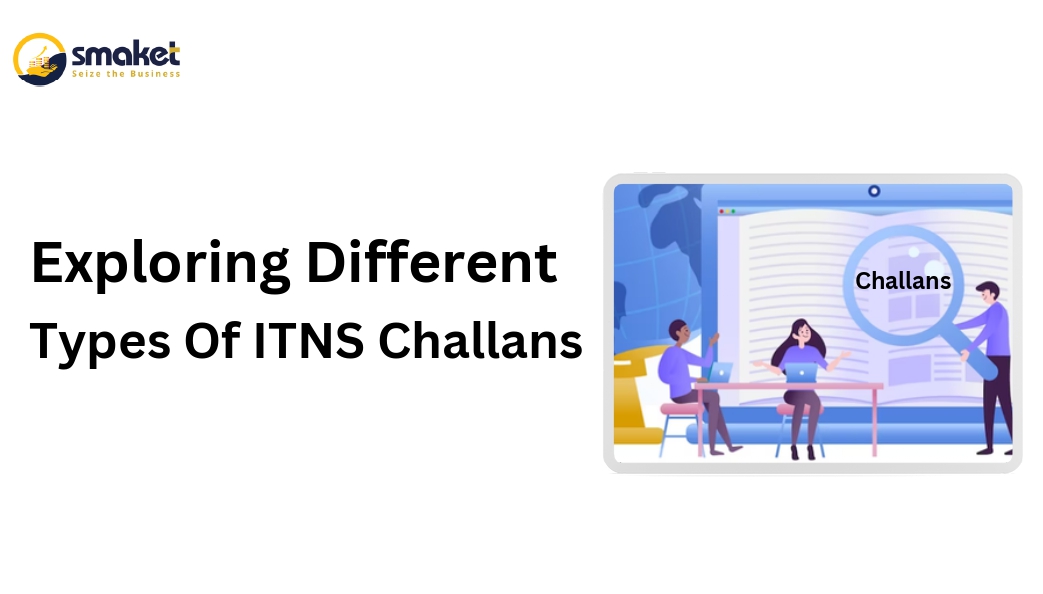Gone are the days when tax payment was a cumbersome manual process fraught with errors and potential fraud. Thanks to technological advancements, the Indian government introduced the Online Tax Accounting System (OLTAS) in 2004. This system revolutionized the way taxes are paid, ensuring efficiency, accuracy, and transparency. In this blog, we will delve into the different types of ITNS (Income Tax Challan) that simplify the tax payment process for individuals and businesses.
Challan ITNS 280:
Challan ITNS 280 is issued when individuals or businesses make income tax payments, including self-assessment tax, advance tax, and regular assessment tax. This challan streamlines the process of paying income tax liabilities, making it convenient and hassle-free.
Challan ITNS 281:
Challan ITNS 281 comes into play when Tax Deducted at Source (TDS) or Tax Collected at Source (TCS) is deposited. It is essential for entities that deduct or collect taxes on behalf of others to utilize this challan to ensure proper compliance with tax regulations.
Challan ITNS 282:
Challan ITNS 282 serves the purpose of payment for various taxes other than income tax. Taxes such as Gift Tax, Wealth Tax, Estate Duty, and Expenditure Tax utilize it. This versatile challan enables individuals and businesses to fulfill their tax obligations across a range of categories.
Benefits of ITNS Challans:
Streamlined Process:
The ITNS challans simplify tax payment by providing a centralized platform for individuals and also businesses to make their tax payments conveniently.
Transparency and Accuracy:
By adopting the OLTAS system, the government ensures greater transparency and reduces the chances of errors or fraudulent activities.
Online Tracking:
The system provides taxpayers with a single copy of the challan, allowing them to track the status of their tax payments online. This feature provides peace of mind and real-time updates on tax compliance.
Conclusion:
The introduction of the Online Tax Accounting System (OLTAS) has revolutionized the way taxes are paid in India. The ITNS challans, namely ITNS 280, ITNS 281, and ITNS 282, have simplified the tax payment process for individuals and businesses alike. These challans provide a seamless and efficient way to fulfill tax obligations while ensuring transparency, accuracy, and ease of tracking. Embracing these digital advancements not only benefits taxpayers but also strengthens the government’s ability to collect taxes efficiently.
FAQ:
1. What is the Online Tax Accounting System (OLTAS)?
The Indian government introduced the Online Tax Accounting System (OLTAS) in 2004 to facilitate online tax payment and collection. It minimizes human intervention, reduces errors, and also provides online information on taxes collected or deposited.
2. What are ITNS challans?
ITNS challans, also known as Income Tax Challans, are forms used for making various tax payments through the OLTAS system. They provide a structured format for individuals and businesses to pay income tax, TDS/TCS, and other taxes such as Gift Tax, Wealth Tax, Estate Duty, and Expenditure Tax.
3. What is Challan ITNS 280 used for?
Taxpayers use Challan ITNS 280 to pay income tax liabilities, which include self-assessment tax, advance tax, and also regular assessment tax. Individuals and businesses can utilize this challan to fulfill their income tax payment obligations.
4. When is Challan ITNS 281 used?
Individuals or entities use Challan ITNS 281 to deposit Tax Deducted at Source (TDS) or Tax Collected at Source (TCS). It is also essential for entities that deduct or collect taxes on behalf of others to use this challan for proper compliance with tax regulations.
5. What is the purpose of Challan ITNS 282?
Challan ITNS 282 facilitates the payment of taxes other than income tax. It covers taxes such as Gift Tax, Wealth Tax, Estate Duty, Expenditure Tax, and similar categories. This challan provides a convenient way to fulfill tax obligations in these specific areas.
6. What are the benefits of using ITNS challans?
Using ITNS challans offers several benefits, including:
- Streamlined Process: The challans simplify tax payment by providing a centralized platform for individuals and also businesses to make their tax payments conveniently.
- Transparency and Accuracy: The OLTAS system ensures greater transparency and also reduces the chances of errors or fraudulent activities.
- Online Tracking: Taxpayers receive a single copy of the challan, enabling them to track the status of their tax payments online, providing peace of mind and also real-time updates on tax compliance.
7. How can I track the status of my tax payments using ITNS challans?
Once you make a tax payment using an ITNS challan, you can track the status of your payment online. The OLTAS system provides a tracking mechanism that allows you to monitor the progress of your tax payment and ensure compliance with tax regulations.
8. Can I use ITNS challans for all types of taxes?
ITNS challans primarily cover income tax payments, including self-assessment tax, advance tax, and regular assessment tax. However, there are specific ITNS challans available for other types of taxes such as TDS/TCS, Gift Tax, Wealth Tax, Estate Duty, Expenditure Tax, and more.
9. Are ITNS challans mandatory for tax payments?
Yes, when making tax payments through the OLTAS system, using the appropriate ITNS challan is mandatory. It ensures proper recording and tracking of tax payments, enabling accurate tax compliance and minimizing errors or discrepancies.
10. How has the OLTAS system improved tax payment processes?
The OLTAS system has improved tax payment processes by introducing online convenience, reducing manual intervention, enhancing transparency, minimizing errors, and also providing taxpayers with real-time updates and tracking capabilities for their tax payments.

